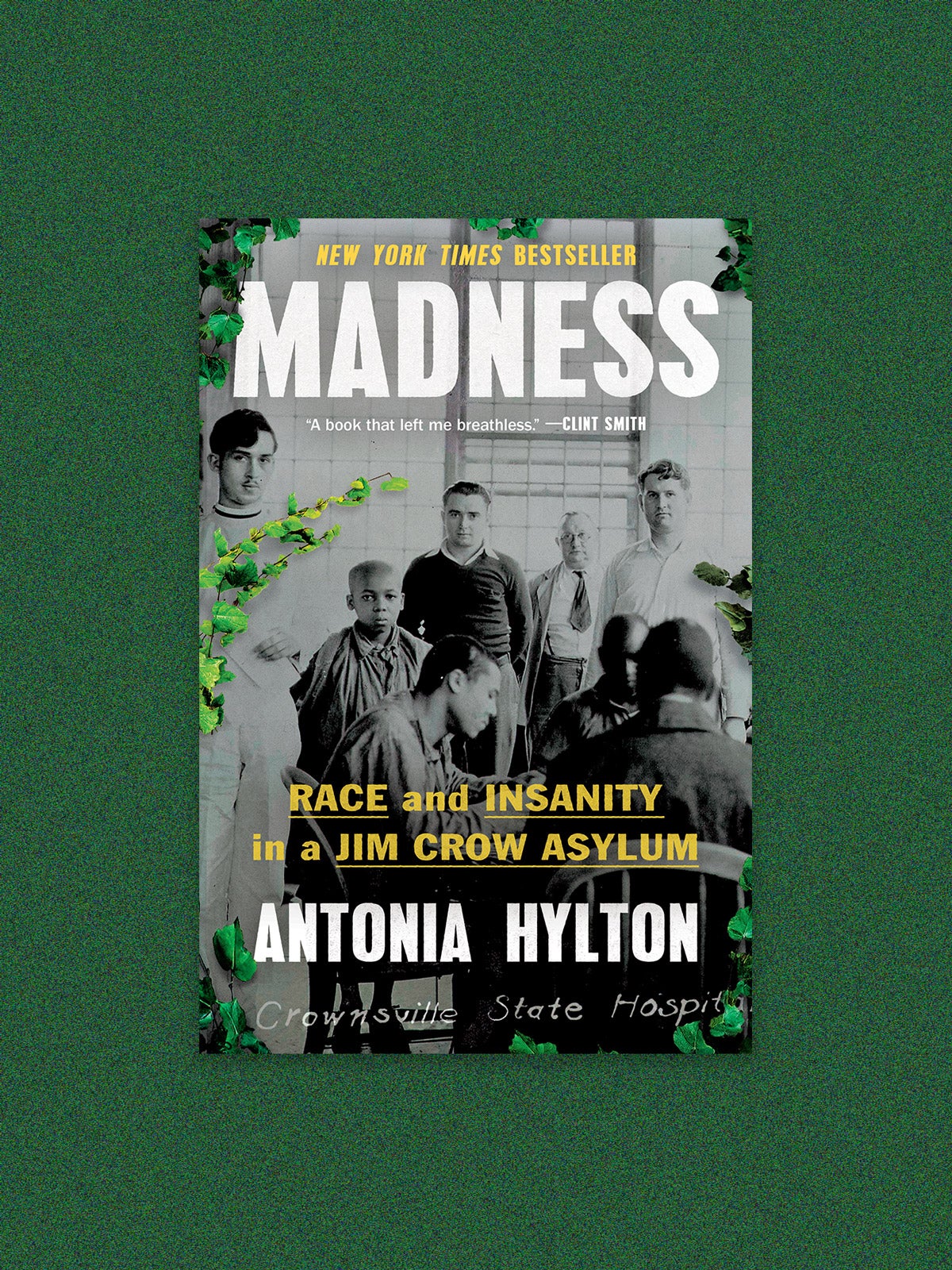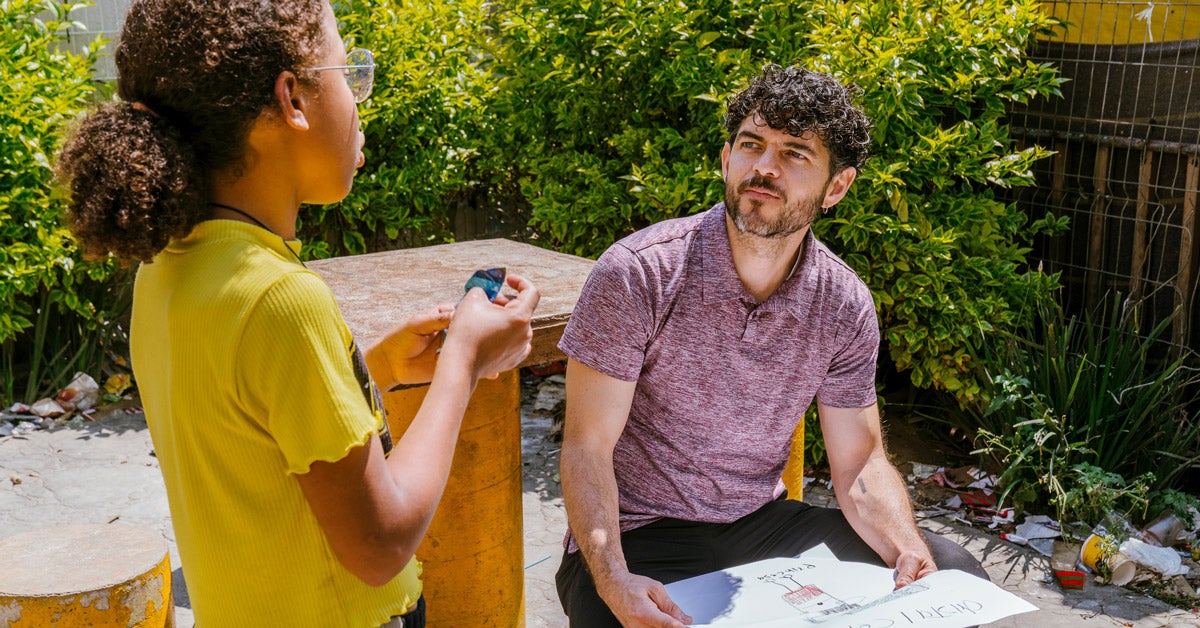
Book
Madness reminds us that health inequities remain present, and political
Lucy C. Lewis noticed a worm in her throat. It interrupted her work as a housemaid and cook when she felt it wiggling around her esophagus. She would cry and pull at her neck; at one point, she tried to cut a hole in her throat to get it out.
This was 1890. Lewis was a 22-year-old Black woman from New Hope, Virginia, living what seemed, by basic indicators of the time, a healthy life. She had regular access to food and drink, and she did not have opium or tobacco addictions. Despite limited educational access as a Black person in America during this era, Lewis could read and write. But no one believed her about the worm.
Her doctor also made notes about other attempts to harm herself. She tore at her clothes, and she tried again and again to cut her throat. In September 1890, three judges decided to send her to the Central Lunatic Asylum for Colored Insane, 129 miles away from her hometown.
I know about this case because of my research on the Central Lunatic Asylum for Colored Insane in Petersburg, Virginia—the first segregated mental institution to care for Black people after the Civil War. I have reviewed dozens of photocopies of its records, many written with loopy, hard-to-read cursive. Each tells a limited story of what happened to each patient. Some, like Lewis, were officially experiencing mental illness and needed help. But others were patients who had not shown symptoms of distress; they were in the wrong place at the wrong time and were swept up by law enforcement or citizens eager to find ways to confine Black people. Lewis’s papers stuck with me. Someone so young should have had so much life ahead of her, even as a young Black woman coming of age at a time when racism limited who she could become. Living with mental illness limited her prospects even more.
These are also the stories of Madness: Race and Insanity in a Jim Crow Asylum by Antonia Hylton. Her book might surprise some, but for me, it only affirmed the worst of what I knew to be true: Anything created out of White panic is often deadly for generations of Black people. Her book is a powerful reminder that the inequities of health are not history; they remain present, and political.
Sign up for Harvard Public Health
Delivered to your inbox weekly.
In Hylton’s book, the White panic is about the end of slavery. She chronicles the life and times of patients and workers at Crownsville State Hospital in Maryland. The facility, opened in 1911, was originally designed to be a segregated asylum: As White Marylanders railed against the end of slavery, they sought new ways to keep Black people with mental illness away from White communities. But as Hylton shows, the asylum became a combination of a workhouse and a jail for Black patients—whether they had a mental illness or not, and many of them did not.
The book tells the story of the facility and its people: Black patients who cleared the forest and chopped wood to build the hospital many of them would never leave alive; White hospital staff who embedded racism in their care and in their interactions with colleagues of color; the experiments performed on Black patients without consent and little oversight.
Hylton is a journalist who knows how to access archives; some families are not able to do the same. Access to hospital archives may be limited by time or financial resources for genealogy website memberships, public records requests, and database access, as well as public record laws protecting the privacy of mental health records even from hundreds of years ago. In addition, some care providers did not always take detailed notes on Black patients, making some patient experiences lost and unrecorded. Descendants of former patients may have no idea that they have ancestors who were committed to these places because those stories are unspoken in the family, too. The lack of preservation keeps truths unknown.
And yet knowing when the first traces of anxiety, depression, or bouts of psychosis emerged in a family tree could be key to unlocking better care for many Black people today—but without details, those people are left in the dark. The injustice and inequity compounds with every generation.
Hylton’s book uses the shadows of Crownsville State Hospital to shine a light on the looming questions of how these intergenerational experiences at the facility have shaped the way generations of Marylanders and their descendants think about mental health. She went beyond the archives to speak to community members who are striving to keep the memory of Crownsville’s history. She spoke to former patients who are still alive, working to figure out who is potentially buried there and demanding the state legislature take action in preservation efforts. Hylton interviewed people who previously worked at Crownsville about their experiences navigating White staff members who didn’t want them there and about their efforts to protect the dignity of their patients, despite funding and other constraints.
In between her thoughtful reporting, Hylton weaves her own reflections on how her family navigates helping each other deal with mental illness and on talking about the stigma of emotional vulnerability. Her personal story reminds us that even a leading voice on health must struggle against the system, in this case, to help her family find the right therapist and resources.
Hylton’s book also comes at a unique moment for Black Americans. Even three years before the pandemic, a survey from the Centers for Disease Control and Prevention found Black people were more likely than White people to experience feelings of sadness, hopelessness, worthlessness, or to feel that everything is an effort, all or most of the time. In the last four years, Black communities have experienced trauma and mass bereavement from COVID-19 and from reckoning with police violence, including the deaths of George Floyd in Minneapolis, Breonna Taylor in Kentucky, Ahmaud Arbery in Georgia, and Jordan Neely in New York City—and many other instances unknown nationally. Black children are also showing signs of distress: Data from 2001 to 2015, released in 2018 in JAMA Pediatrics, found that Black kids between the ages of 5 and 12 were two times more likely to die by suicide than White children of the same age. We are only emerging from the fog of suspended time that was COVID-19; it will take years to understand the intergenerational magnitude of grief, loss, and trauma.
Thanks to paradigm-shifting social media and new generations encouraging conversation, these days there are more open and frank discussions about mental illness and trauma in the Black community. The call for openness has helped Black families reveal multi-generational trauma and recognize mental illness. And yet, despite some progress, there’s still a sense of stigma, shame, and incredulity in the Black community when trying to understand mental illness and its various treatments, whether therapy, medication, or something else. There are still the elders who don’t understand depression; the bracing for familial judgment if you talk about going to therapy; the fear of seeming “weak” for seeking help; the sentiment that mental illness is “something White people deal with.” The unwelcoming mental health system and the historical weaponization of mental illness in the United States has effectively discouraged Black Americans from seeking help.
Health care, despite its alleged benevolence, is political, and Black people’s inability to disentangle their mental health from the U.S. criminal justice system, and from stigma, is no accident either. Even today, people who emerge from psychiatric facilities often do not see themselves as patients but rather “psychiatric survivors” who endured the pains of the mental health system. This mental health system and the enduring legacy of caring for people since the Civil War was by design—a choice. Hylton’s book is a powerful portrait of that system and a reminder that every citizen has a collective responsibility to remember the historical shortcomings of our mental health system and the lives of those who experienced it firsthand. But more than that, the book shows that we must end the stigma against mental illness now, so that the next generation can focus on wellness instead of shame.
Book cover: Hachette Book Group


